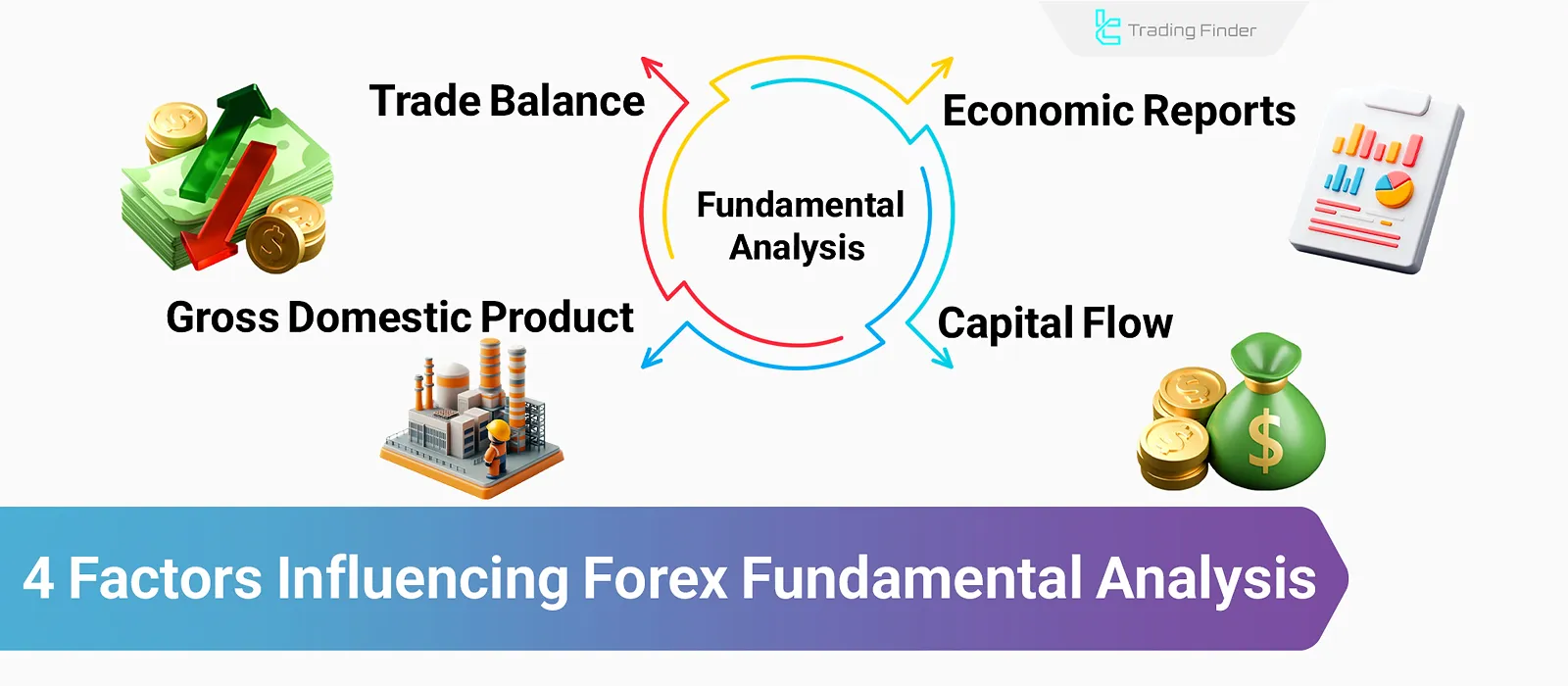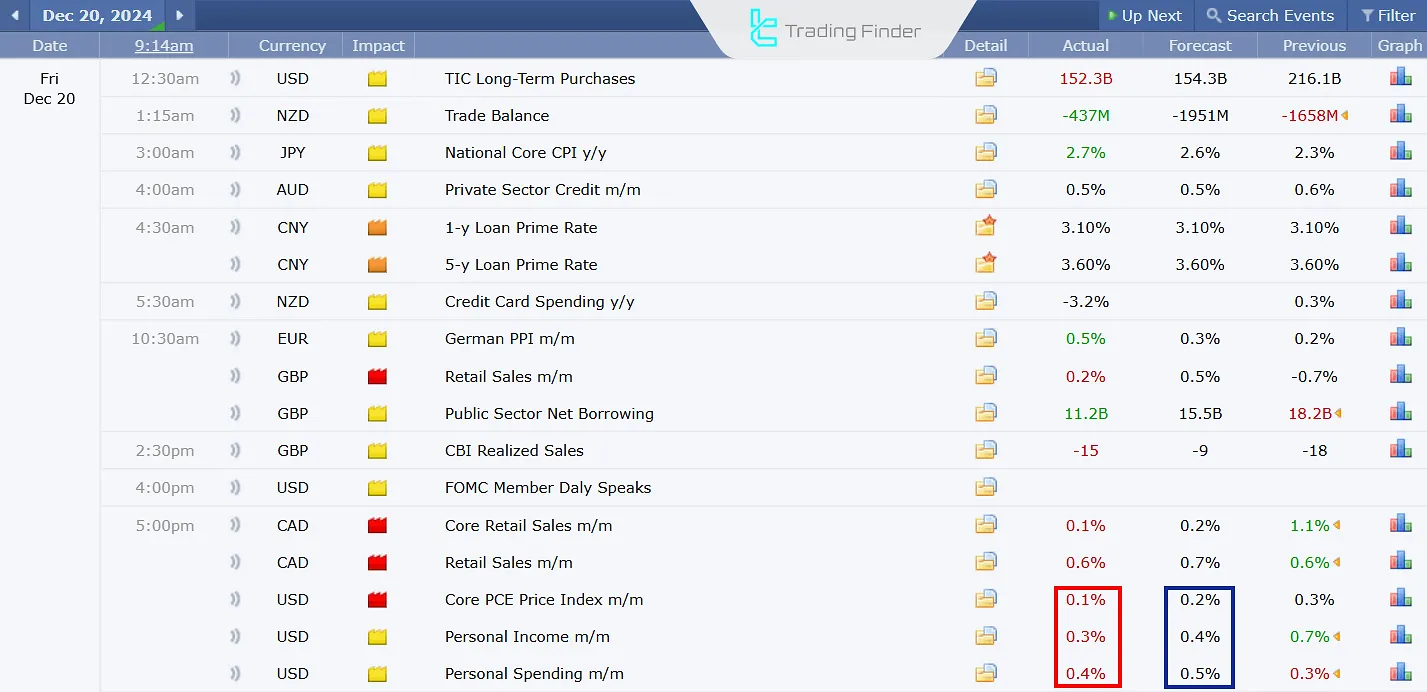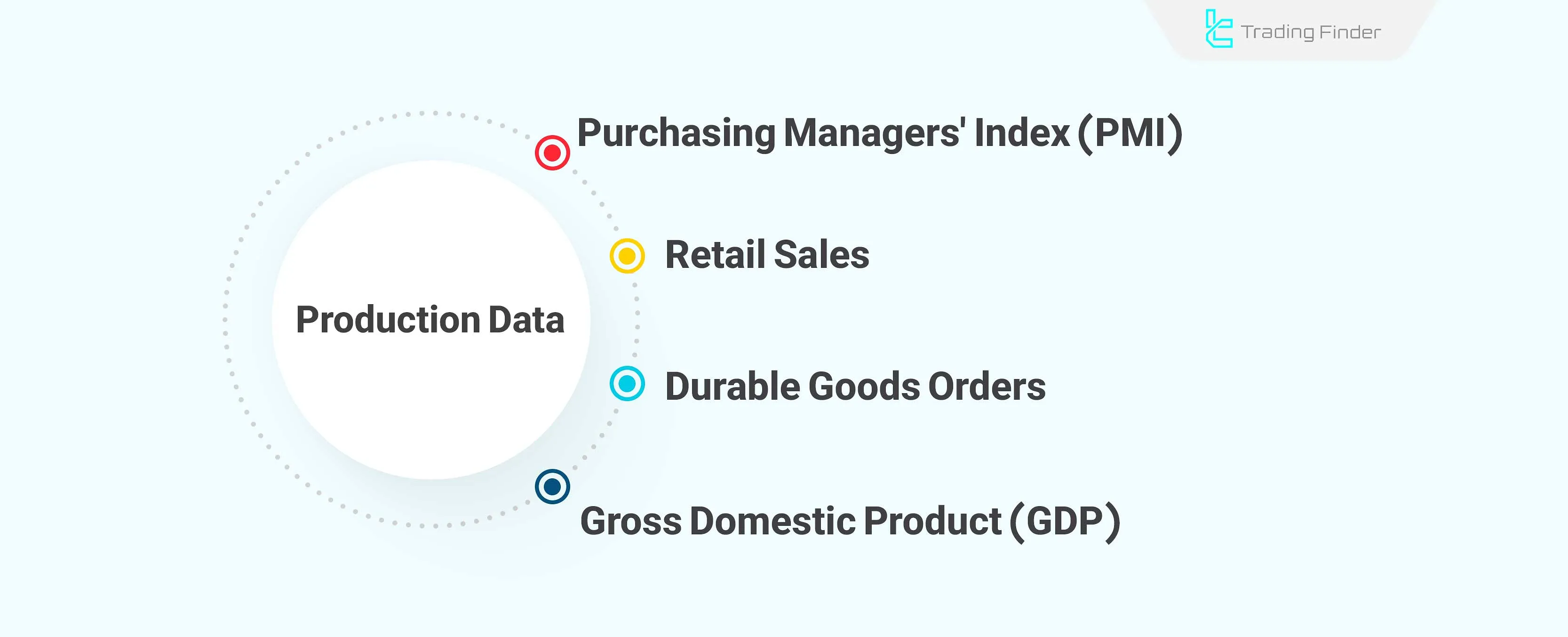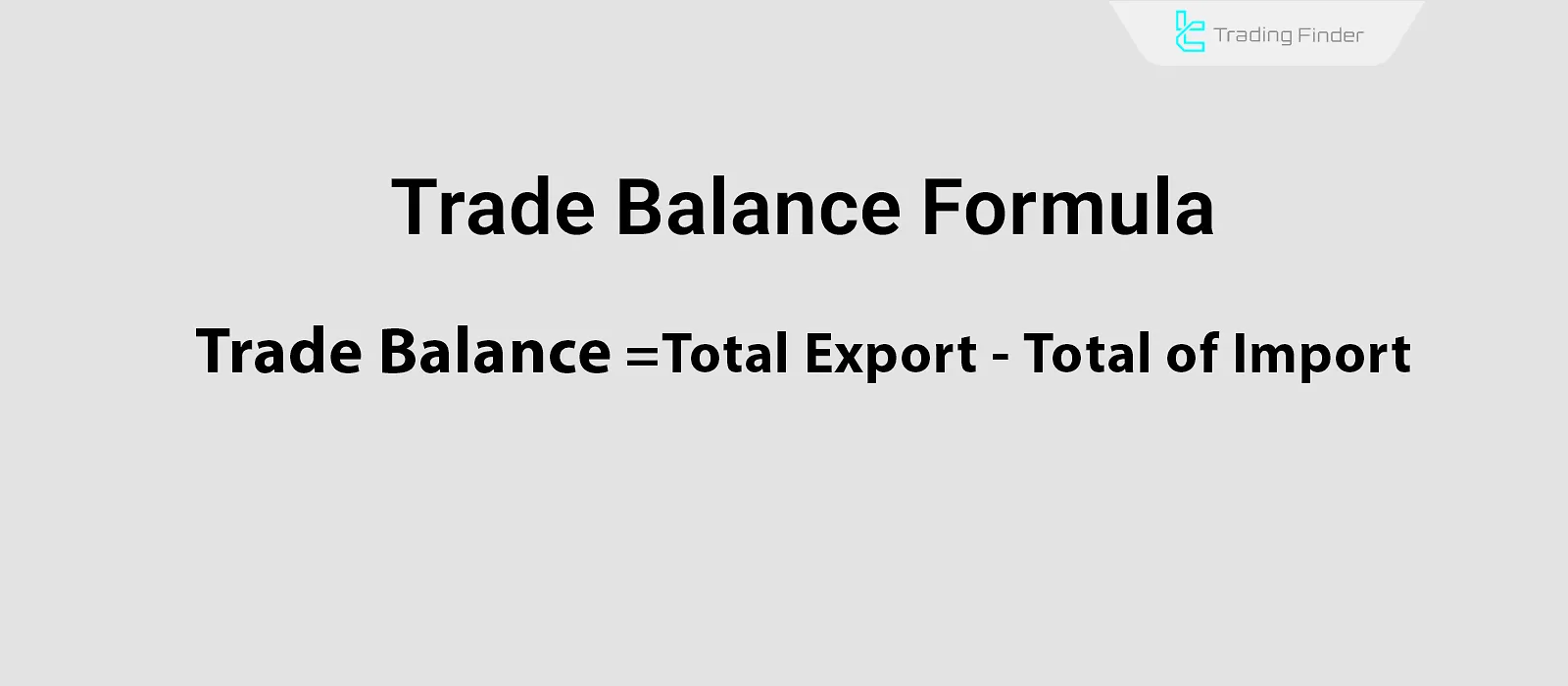The most significant factors influencing Forex Fundamental Analysis are economic reports, Gross Domestic Product (GDP), capital flow, and trade balance.

Economic reports (including CPI, NFP, and PMI) create volatility in the Forex market based on the difference between actual figures and forecasts.
Additionally, understanding how GDP impacts Forex and analyzing its key components [trade balance, demand, government spending, capital flow, and investment] are essential for identifying mid-term and long-term market trends.
4 Key Factors in Fundamental Forex Analysis
Economic growth, capital flow, and trade balance influence long-term economic trends and, consequently, currency movements. Key Factors Influencing Fundamental Analysis:
1- Economic Data and Reports
2- Economic Growth (GDP)
3- Capital Flow
4- Trade Balance
1- Economic Data Affecting Forex
Economic data is generally categorized into three groups: production, inflation, and employment data, all of which play a role in fundamental factors affecting currency pairs market.

The image above shows a snapshot of the U.S. PCE inflation data for December 2024 on the Forex Factory website.
Economic data includes previous, forecast, and actual figures (the actual data released). In the image, expectations are highlighted in blue, while actual values are highlighted in red.
Production Data
Production data indicates the health of the manufacturing sector. Since production directly affects economic growth and the job market, understanding manufacturers' state is highly significant.

Types of production data:
- Purchasing Managers' Index (PMI): A survey of procurement managers that provides insights into employment, raw material inflation, and sales volumes; (Above expectations: Currency strengthens)
- Retail Sales: Measures the sales volume in the retail sector and is used to assess demand; (Above expectations: Currency strengthens)
- Durable Goods Orders: Indicates the level of orders for factory equipment and capital goods; (Above expectations: Currency strengthens)
- Gross Domestic Product (GDP): This represents total production within a country and is the primary measure of economic growth; (Above expectations: Currency strengthens)
Employment Data
Consumer demand drives economic growth, but strong demand is only possible when the labor market thrives. Low unemployment and higher wages boost demand.
Central banks also use labor market data to determine monetary policy. Below are the key employment-related indicators:
- Unemployment Rate: Percentage of the labor force actively seeking but unable to find work; (Above expectations: Currency weakens)
- Non-Farm Payrolls (NFP): Measures employment changes in the U.S. excluding agriculture; (Above expectations: Currency strengthens)
- Unemployment Claims: Reflects the number of new unemployment insurance claims. (Above expectations: Currency weakens)
Inflation Data
Controlling inflation is one of the central bank's primary objectives, and inflation data can cause significant market volatility. Main inflation-related indicators:
- Consumer Price Index (CPI): Measures the weighted average price change of a specific basket of goods. (Above expectations: Currency strengthens)
- Core CPI: CPI excluding food and energy prices. (Above expectations: Currency strengthens)
- Producer Price Index (PPI): Measures inflation in raw material costs and serves as a leading indicator for consumer inflation. (Above expectations: Currency strengthens)
- Personal Consumption Expenditures (PCE): Reflects U.S. consumer inflation and is the Federal Reserve’s preferred measure of inflation. (Above expectations: Currency strengthens)
2- The Impact of Economic Growth on Forex
Economic growth reflects the health of production and the overall economy. During periods of economic expansion, consumer demand is high, and producers experience increased sales.
With higher profits, producers hire more employees, leading to an improved labor market and a lower unemployment rate.
These conditions generate healthy tax revenues for the government. Additionally, a country with strong economic growth attracts foreign investors, increasing demand for its local currency and strengthening it.
According to the explanation above, the currency appreciates if GDP data is higher than expectations. Conversely, the respective currency weakens if GDP data is lower than expectations.
3- Capital Flow
Capital flow represents the movement of investments between countries. Capital Flow Forms:
- Foreign Direct Investment (FDI): Refers to investments in long-term assets such as land, factories, and companies;
- Portfolio Investment: Refers to investments in short-term assets like stocks, bonds, and other securities.
Capital flow directly affects currency supply and demand and is one of the key factors in Forex Fundamental Analysis. However, positive and negative capital flows affect currency strength differently.
Capital Inflows
Capital inflows occur when demand for a currency increases, leading to its appreciation. For example, when global investors buy U.S. government bonds, the demand for the U.S. dollar increases, making it stronger.
Note: To buy foreign government bonds, an investor must first convert their local currency into the currency of the bond-issuing country. This conversion increases demand for the destination currency.
Capital Outflows
Capital outflows occur when currency is sold, leading to its depreciation. In this case, the currency of the receiving country appreciates, impactes the exchange rate.
4- Trade Balance and Forex Fundamental Analysis
Trade balance represents the net value of exports and imports and has two possible states:
- Trade Surplus: Trade surplus occurs when the value of exported goods is higher than imported goods;
- Trade Deficit: Trade deficit occurs when the value of imported goods is higher than exported goods.

Factors Influencing Trade Balance
The exchange rate between the home and destination country plays a critical role in trade balance. Additionally, trade balance is influenced by other factors such as commodity prices and economic growth:
- Commodity Prices: In economies reliant on commodity exports, fluctuations in commodity prices significantly impact trade balance;
- Economic Growth: Higher economic growth increases demand for imports;
- Exchange Rate: In export-driven economies, a controlled local currency depreciation can boost exports.
Note: Commodities refer to raw or minimally processed goods traded globally.
Impact of Trade Balance Data on Forex
Trade balance data affects the Forex market in two ways:
- Higher-than-expected data: Strengthens the respective currency
- Lower-than-expected data: Weakens the respective currency
Conclusion
Economic reports, GDP, capital flow, and trade balance are essential factors influencing forex basic analysis as they determine the supply and demand for currency pairs.
One can understand currency movement trends by analyzing capital flow and trade balance. Additionally, continuous monitoring and detailed analysis of economic reports help forecast medium-term currency movements.





